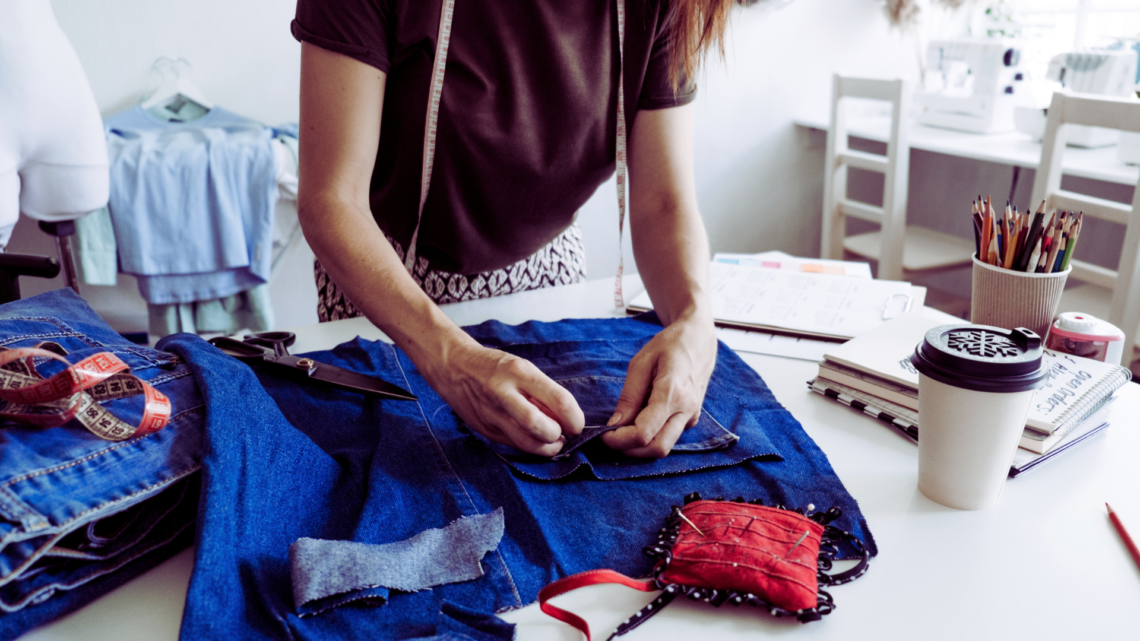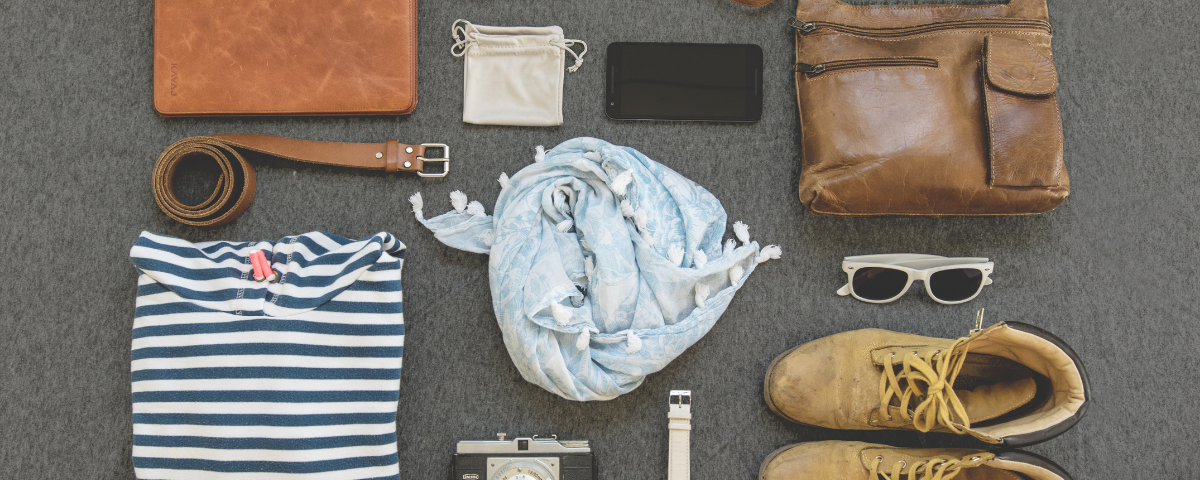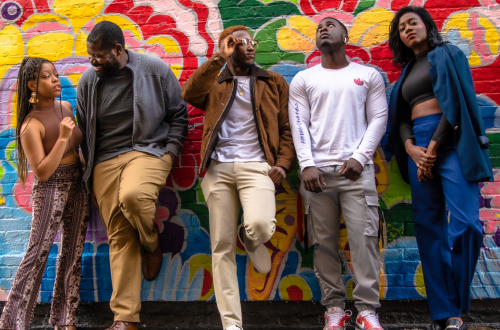
How to Upcycle Old Clothes: Creative Ideas for Sustainable Fashion
Old clothes often sit forgotten in closets, but they hold the potential for creativity and sustainability. Upcycling offers an opportunity to transform worn garments into stylish new pieces, allowing for personal expression while reducing waste. This process not only breathes new life into the fabric but also promotes a more eco-friendly approach to fashion.
The act of upcycling can range from simple repairs and alterations to complex projects like creating home décor or entirely new clothing items. Individuals can leverage online tutorials, social media inspiration, and their own creativity to turn outdated styles into fresh, trendy additions to their wardrobes.
By choosing to upcycle, one can embrace a unique style that reflects personal tastes while contributing to environmental conservation. It presents a practical solution for anyone looking to change their fashion footprint, making it an engaging activity that empowers creativity.
Benefits of Upcycling Old Clothes
Upcycling old clothes offers various advantages. It promotes sustainability by reducing waste in landfills.
Environmental Impact:
- Decreases textile waste
- Lowers carbon footprint
- Conserves resources used in manufacturing new clothing
Economic Benefits:
- Saves money by repurposing garments
- Creates unique pieces with no cost for new materials
- Potential to sell upcycled items for profit
Creative Expression:
- Allows for personal creativity and customization
- Encourages unique fashion styles
- Offers a fulfilling DIY experience
Community Engagement:
- Fosters a sense of community through workshops and exchanges
- Encourages sharing skills and techniques
- Supports local thrift stores and charities through donations
Upcycling encourages a shift in mindset about consumption. This approach highlights the value of existing materials while empowering individuals to make environmentally mindful choices.
Materials and Tools Required
Having the right materials and tools is crucial for successful upcycling projects. This includes identifying quality fabrics and gathering essential tools necessary for transforming old clothing into new pieces.
Identifying Quality Fabrics
When selecting clothes for upcycling, it’s important to recognize quality fabrics. Natural fibers such as cotton, linen, and wool are durable and easy to manipulate. Synthetic fibers may also work, but they can be less forgiving.
Inspect garments for flaws like holes or extensive wear, as these can limit usability. Look for pieces that have appealing patterns, colors, or structural elements that can enhance the final design. Fabrics with a high thread count often indicate better quality.
Additionally, consider the fabric weight. Lighter materials work well for layering, while thicker fabrics can provide structure or be used for outerwear. Keeping these factors in mind will guide you in choosing the best items for your upcycling projects.
Essential Upcycling Tools
A variety of tools facilitate the upcycling process. Basic tools include:
- Sewing machine: A reliable machine saves time and allows for versatile stitching options.
- Scissors: Quality fabric scissors are crucial for clean cuts.
- Pins and clips: These hold pieces together before sewing.
- Sewing needles: Different needle types cater to various fabric weights.
Additional tools may enhance creativity. A rotary cutter can streamline cutting intricate patterns. Fabric glue provides an alternative for non-sewing projects. Furthermore, a seam ripper is useful for disassembling garments without damaging fabric.
By gathering these materials and tools, one prepares for a rewarding upcycling experience.
Preparatory Steps for Upcycling
Before starting the upcycling process, it is essential to gather materials and tools. This helps ensure a smooth workflow.
Necessary Materials:
- Old clothes
- Scissors
- Sewing machine or needle and thread
- Fabric paint or dye (optional)
- Other embellishments (e.g., buttons, patches)
Initial Considerations:
- Assessment of Clothing:
Evaluate the condition of the clothes. Identify items that can be transformed rather than discarded. - Inspiration and Planning:
Look for design ideas. Websites, social media, and upcycling tutorials can provide valuable insights. - Skill Level Evaluation:
Determine personal skills in sewing and crafting. This will help in choosing suitable projects. - Workspace Preparation:
Create a comfortable workspace. Adequate lighting and organization are important for efficiency. - Safety Precautions:
Keep safety in mind. Use sharp tools carefully to prevent injuries.
Following these preparatory steps, one can move forward with confidence. Engaging in upcycling requires both creativity and practical skills. Proper preparation lays a strong foundation.
Creative Upcycling Ideas
Upcycling old clothes provides a sustainable way to refresh a wardrobe. These creative projects allow for personal expression while minimizing waste. Here are several specific ideas to inspire the transformation of worn garments.
Transforming T-Shirts
Old t-shirts can become a canvas for creativity. By turning them into tote bags, individuals can replace single-use plastic bags. To make a tote, cut off the sleeves and neckline, then tie the bottom into knots.
Another idea is to create a quilt. Cutting t-shirts into squares and sewing them together can preserve memories associated with events and milestones. This not only gives a new life to the fabric but also results in a functional keepsake.
Lastly, t-shirts can be transformed into stylish pillows. Simply fill the shirt with stuffing and sew it closed. This approach not only adds a touch of personalization to home decor but also recycles fabric that might otherwise end up in a landfill.
Revamping Denim
Denim jeans hold considerable potential for upcycling. One popular method involves modifying old jeans into fashionable cut-off shorts. By carefully cutting the legs, fraying the edges, and adding embellishments like patches or studs, one can create a trendy summer staple.
Another option is to use denim scraps to create a denim bag. Combining different shades and textures can yield a unique accessory. The process involves sewing the pieces into a structured form that fits personal style.
Additionally, old denim can be repurposed into a cozy throw blanket. By sewing together various patches, an individual can create a durable and warm layer for home use. This not only recycles worn-out jeans but also provides an attractive and practical item for any living space.
Accessorizing with Textile Scraps
Textile scraps from old clothes can serve as the basis for accessories. Fabric bracelets or necklaces can be created with simple braiding or knotting techniques. This process enables creativity in color combinations and patterns.
Headbands offer another practical use for scraps. By sewing together various fabric pieces, individuals can craft unique hair accessories. These can be tailored to match outfits or personal preferences.
Small Scraps can also be transformed into decorative home items, such as coasters or wall hangings. Using an embroidery hoop, fabric scraps can be layered and displayed as art. This method showcases creativity while repurposing material that would otherwise contribute to waste.
Reinventing Outerwear
Old jackets or coats can be revitalized through upcycling. Adding patches, embroidery, or fabric paint can turn a plain outer layer into something unique and personalized. This enhances the garment’s aesthetic appeal while extending its life.
Another idea is to transform a jacket into a bag. By detaching the sleeves and modifying the body, individuals can create a practical tote. This not only gives the denim or leather a new purpose but also results in a functional item that speaks to individual style.
Lastly, layering can create new looks. By combining multiple jackets or coats, one can create a distinctive fashion statement. This approach can yield unique silhouettes, adding versatility to a closet without the need for new purchases.
Techniques for Upcycling
Upcycling old clothes can be an engaging and creative process. Various techniques enhance the value and appearance of garments, allowing for personalization and sustainability.
Basic Sewing Techniques
Basic sewing skills form the foundation for upcycling projects. Techniques include:
- Patchwork: Combining pieces of fabric to create unique designs. This can cover imperfections or simply add style.
- Appliqué: Sewing one fabric onto another, allowing for decorative patterns. This technique gives items a refreshing look.
- Hem alterations: Adjusting lengths can transform dresses or pants, making them more functional.
Using a sewing machine will speed up the process. Hand-sewing works well for small projects or detailed work. Essential tools include needles, thread, scissors, and pins, ensuring a professional finish.
Dyeing and Printing
Dyeing and printing enable significant changes in color and design. Popular methods include:
- Natural dyes: Utilizing plants, fruits, or vegetables to create eco-friendly colors. Examples include coffee, turmeric, or beet juice.
- Tie-dye: This technique involves tying fabric in sections, and then applying dye for unique patterns. It’s versatile and fun, ideal for t-shirts and scarves.
- Fabric printing: Stamping or screen printing designs allow for customization. This approach is great for adding logos or artwork.
Preparation is crucial for even results. Wash and dry the garment before dyeing and follow manufacturer instructions for dye products.
Embellishment Methods
Embellishments add unique touches to upcycled clothing. Some popular methods include:
- Beading: Attaching beads to garments for an elegant look. This works well on collars, cuffs, or hemlines.
- Embroidery: Using threads to create designs or patterns enhances garments. It adds texture and can cover flaws.
- Iron-on patches: Quick and easy, patches add a personalized touch. They can also promote messages or aesthetic themes.
Selecting appropriate embellishments enhances the garment’s appeal. Experimenting with placement and combinations opens creative avenues.
Upcycling for Different Skill Levels
Upcycling can be tailored to various skill levels. Each category offers unique projects that can enhance creativity and sustainability. Here’s a breakdown of options for beginners, intermediates, and advanced crafters.
Beginner Projects
For those new to upcycling, starting with simple projects is key. Options include:
- T-Shirt Tote Bags: Cut the sleeves and hem off a t-shirt, tie knots at the bottom, and turn it into a bag.
- Patchwork Cushion Covers: Use fabric scraps to create a unique cushion cover. Simply sew pieces together to achieve the desired pattern.
- Distressed Denim: Transform old jeans into trendy shorts by cutting and distressing them using sandpaper or scissors.
These projects require minimal tools such as scissors needles and thread, making them accessible and easy to complete.
Intermediate Challenges
Crafters with some experience can explore more complex techniques and materials. Projects include:
- Reversible Clothing: Upcycle garments by altering them into reversible pieces. This involves sewing both sides to showcase different styles.
- Fabric Dyeing: Experiment with tie-dye or batik to refresh plain clothes with vibrant colors and patterns.
- Quilting with Old Fabrics: Create a quilt from various fabric scraps or old clothing, which can be assembled by sewing squares together.
These projects require a sewing machine and a bit more time, but they yield creative and functional results.
Advanced Upcycling Endeavors
Experienced creators may wish to tackle advanced projects that involve detailed techniques. Ideas include:
- Tailored Garment Reconstruction: Alter ill-fitting clothes to create custom-fitted pieces by adjusting seams and adding new elements.
- Fashion Accessories: Repurpose materials from old clothes, such as zippers and buttons, to design unique jewelry or bags.
- Fabric Manipulation: Techniques like pleating, shirring, or smocking can add texture and interest to garments, transforming the original fabric dramatically.
These projects require a comprehensive understanding of sewing techniques and a variety of tools, challenging the crafter while producing standout pieces.
Sustainability and Impact
Upcycling old clothes contributes significantly to sustainability by reducing waste, saving resources, and promoting a circular economy. It impacts the environment, economy, and culture in various meaningful ways.
Environmental Benefits
Upcycling helps divert textiles from landfills, where they can take years to decompose. By reusing materials, it reduces the demand for new textile production, which is resource-intensive.
Key statistics:
- Landfill waste: Approximately 92 million tons of textile waste are generated globally each year.
- Water savings: Creating new clothing typically uses about 2,700 liters of water per shirt, the equivalent of nearly three years of drinking water for one person.
Implementing upcycling practices decreases pollution linked to textile production, including water contamination and greenhouse gas emissions.
Economic Advantages
Upcycling can create economic opportunities by fostering small businesses and encouraging local craftsmanship. Individuals can sell upcycled products at markets or online, contributing to the local economy.
Potential benefits:
- Cost savings: People who upcycle save money as they utilize existing resources instead of purchasing new items.
- Job creation: The growing upcycling trend can lead to new job opportunities in the design, production, and retail sectors.
By investing in upcycled goods, communities can stimulate sustainable economic growth while promoting environmental stewardship.
Cultural Significance
Upcycling can shift societal perceptions towards sustainability, fostering a culture that values creativity and resourcefulness. It encourages individuals to view clothing as a means of self-expression rather than disposable items.
Cultural impacts:
- Fashion industry change: Upcycling challenges fast fashion by promoting bespoke, unique items.
- Community engagement: Upcycling workshops can foster community involvement, bringing together individuals to share skills and ideas.
The practice of upcycling reflects a broader movement towards sustainability, encouraging consumers to take an active role in reducing waste and making mindful purchasing decisions.
Caring for Upcycled Clothing
Upcycled clothing needs careful attention to maintain its appearance and longevity. Proper care can ensure that these creative items remain in good condition.
Washing Tips:
- Use cold water to prevent shrinking and color fading.
- Turn garments inside out to protect embellishments.
- Use a gentle detergent that is free from harsh chemicals.
Drying Methods:
- Air drying is preferred to avoid damage from high heat.
- If using a dryer, select a low heat setting.
Storing Upcycled Items:
- Store in a cool, dry place to prevent mold and mildew.
- Use padded hangers for delicate fabrics to maintain shape.
Repair and Maintenance:
- Regularly check for loose threads or seams; mend promptly.
- For stains, treat them right away according to fabric type.
Avoiding Damage:
- Keep away from direct sunlight to prevent fading.
- Be cautious with accessories that might snag or pull on fabric.
By following these care guidelines, upcycled clothing can be enjoyed for years while showcasing individual creativity.
Sharing and Inspiring Others
Sharing upcycling projects can motivate others to take action. Individuals who display their creativity generate interest in a sustainable fashion.
Social Media Platforms
Using platforms like Instagram, Pinterest, or TikTok can effectively showcase projects. Here are ways to engage:
- Post Before-and-After Photos
Visual transformations attract attention. - Share Tutorials
Step-by-step guides empower others to start their own projects. - Join Online Communities
Participate in forums or groups focused on upcycling.
Hosting Workshops
Organizing local events or virtual classes allows hands-on experience. Participants gain skills and learn from each other.
- Encourage Group Projects
Collaborative efforts foster creativity and connection. - Provide Resources
Share materials or links for further learning.
Personal Stories
Sharing personal experiences with upcycling can inspire others. Discussing challenges and successes makes the journey relatable.
- Highlight Unique Projects
Showcase original ideas that stand out. - Celebrate Achievements
Recognizing milestones encourages community involvement.
Creating a culture of sharing emphasizes the value of upcycling. This approach not only reduces waste but also fosters a sense of community around sustainable practices. By inspiring others, individuals contribute to a larger movement toward eco-conscious fashion choices.




